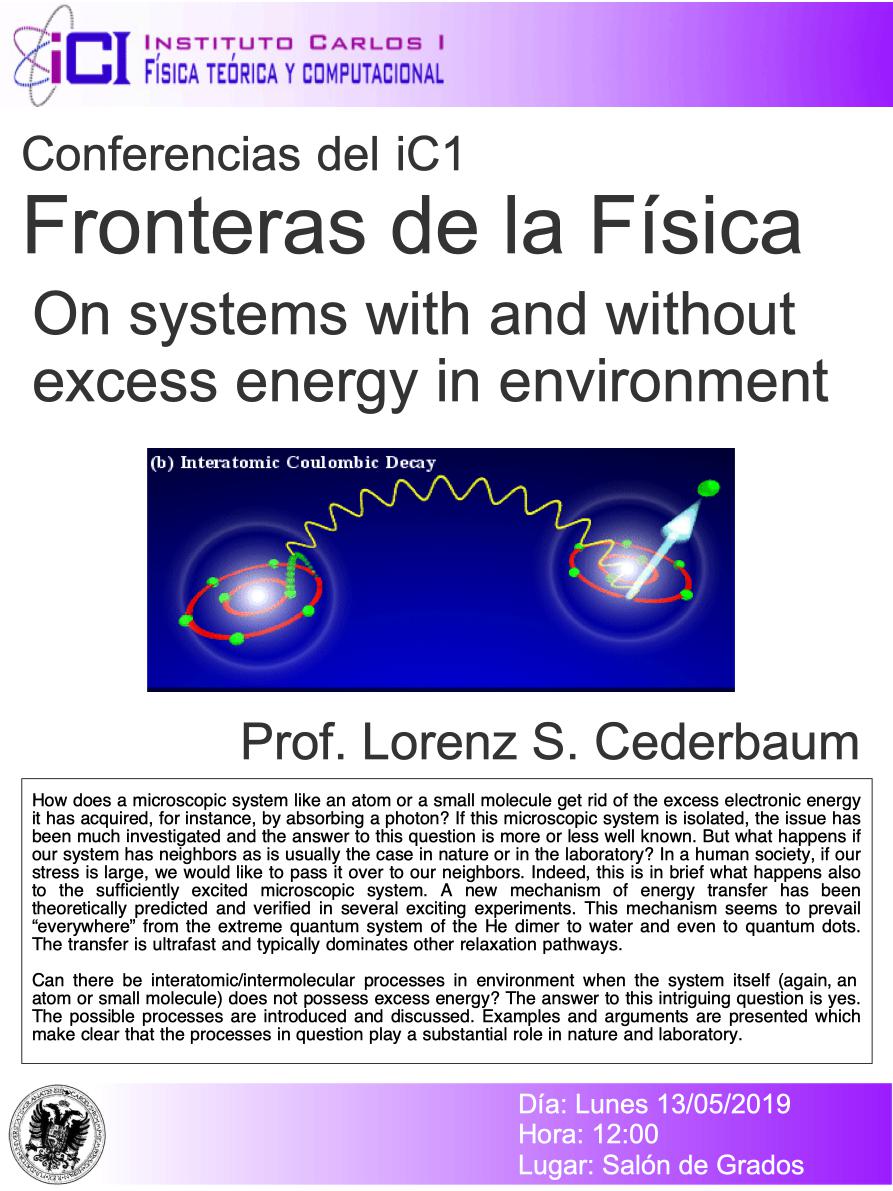Día: Lunes 13 de Mayo de 2019.
Hora: 12:00.
Lugar: Salon de Grados.
Ponente: Prof. Lorenz S. Cederbaum, Department of Theoretical Chemistry University of Heidelberg Heidelberg, Alemania.
Conferencias del Instituto Carlos I de Física Teórica y Computacional dentro del Ciclo Fronteras de la Física.
How does a microscopic system like an atom or a small molecule get rid of the excess electronic energy it has acquired, for instance, by absorbing a photon? If this microscopic system is isolated, the issue has been much investigated and the answer to this question is more or less well known. But what happens if our system has neighbors as is usually the case in nature or in the laboratory? In a human society, if our stress is large, we would like to pass it over to our neighbors. Indeed, this is in brief what happens also to the sufficiently excited microscopic system. A new mechanism of energy transfer has been theoretically predicted and verified in several exciting experiments. This mechanism seems to prevail “everywhere” from the extreme quantum system of the He dimer to water and even to quantum dots. The transfer is ultrafast and typically dominates other relaxation pathways.
Can there be interatomic/intermolecular processes in environment when the system itself (again, an atom or small molecule) does not possess excess energy? The answer to this intriguing question is yes. The possible processes are introduced and discussed. Examples and arguments are presented which make clear that the processes in question play a substantial role in nature and laboratory.





